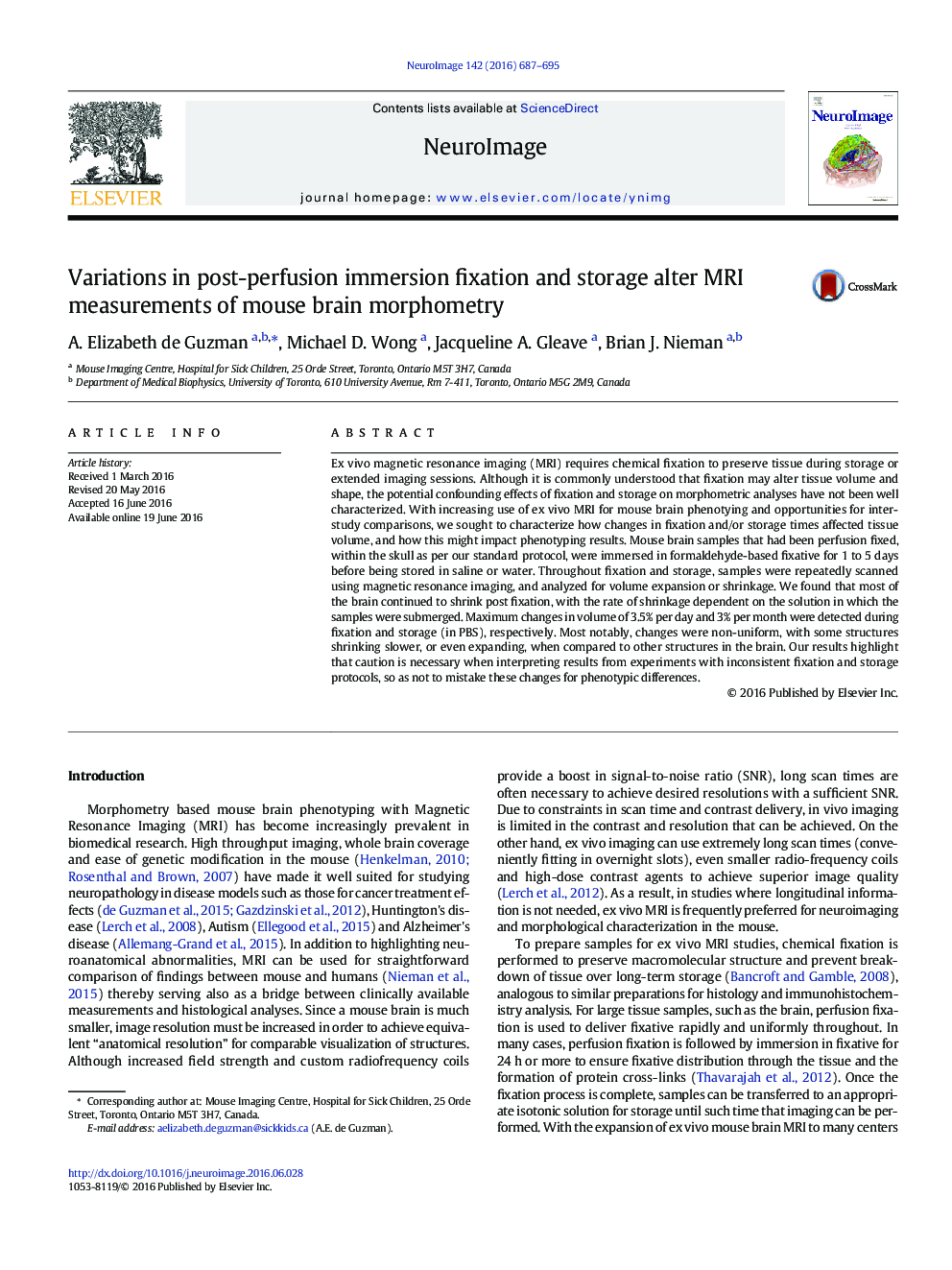| Article ID | Journal | Published Year | Pages | File Type |
|---|---|---|---|---|
| 5631473 | NeuroImage | 2016 | 9 Pages |
Ex vivo magnetic resonance imaging (MRI) requires chemical fixation to preserve tissue during storage or extended imaging sessions. Although it is commonly understood that fixation may alter tissue volume and shape, the potential confounding effects of fixation and storage on morphometric analyses have not been well characterized. With increasing use of ex vivo MRI for mouse brain phenotying and opportunities for inter-study comparisons, we sought to characterize how changes in fixation and/or storage times affected tissue volume, and how this might impact phenotyping results. Mouse brain samples that had been perfusion fixed, within the skull as per our standard protocol, were immersed in formaldehyde-based fixative for 1 to 5Â days before being stored in saline or water. Throughout fixation and storage, samples were repeatedly scanned using magnetic resonance imaging, and analyzed for volume expansion or shrinkage. We found that most of the brain continued to shrink post fixation, with the rate of shrinkage dependent on the solution in which the samples were submerged. Maximum changes in volume of 3.5% per day and 3% per month were detected during fixation and storage (in PBS), respectively. Most notably, changes were non-uniform, with some structures shrinking slower, or even expanding, when compared to other structures in the brain. Our results highlight that caution is necessary when interpreting results from experiments with inconsistent fixation and storage protocols, so as not to mistake these changes for phenotypic differences.
